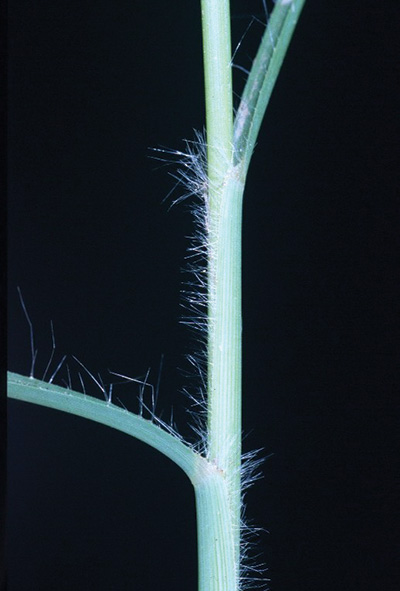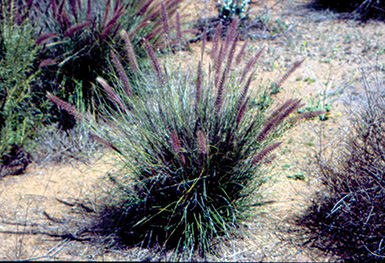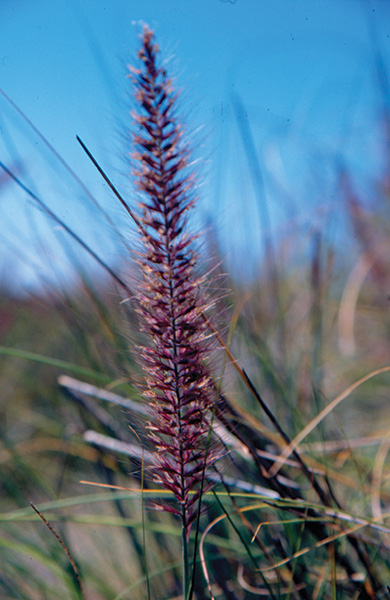Stem
- Up to 5 ft. tall; round in cross-section; grows in bunches

Crimson fountaingrass stem
Leaves
- Blades are flat to v-shaped, 0.5-2 ft. long and less than 0.16 in. wide; edges (margins) have long hairs, particularly near the collar

Crimson fountaingrass plant
Flower
- Spike, 3-12 in. long and 1-2 in. wide; purplish bristles; can be droopy

Crimson fountaingrass flower
Other
- Grows best in climates with mild winters; often infests disturbed areas such as roadsides, desert areas, washes and waste areas; known to occur in Clark county
- Perennial; reproduces by seed
- Can be a fire hazard
- Ornamental; cultivars that DO NOT produce viable seed are NOT considered noxious in Nevada.
Control
- Hand removal (including the crown) of individual plants is effective for small infestations; burning is NOT effective and may cause weed density to increase
- Apply fluzaifop, glyphosate or sethoxydim to actively growing plants; imazapyr pre- or post emergence
Blecker, L., Creech, E., Dick, J., Gephart, S., Hefner, M., Kratsch, H., Moe, A., Schultz, B.
2020,
Nevada Noxious Weed Field Guide – Crimson fountaingrass,
Extension, University of Nevada, Reno, Field Guide


